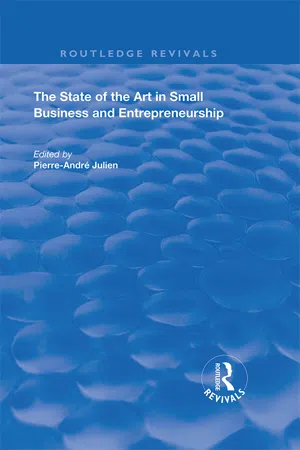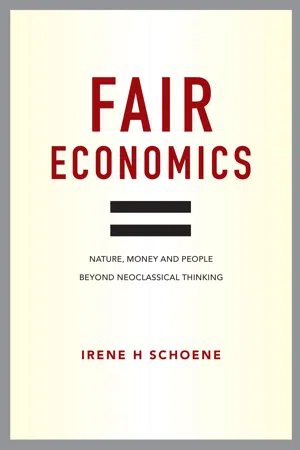Geography
Tertiary Sector
The tertiary sector refers to the part of the economy that provides services to businesses and consumers. This sector includes a wide range of industries such as healthcare, education, finance, hospitality, and transportation. Tertiary sector activities are essential for supporting and enhancing the production and consumption of goods in the economy.
Written by Perlego with AI-assistance
Related key terms
Related key terms
1 of 4
Related key terms
1 of 3
7 Key excerpts on "Tertiary Sector"
- eBook - ePub
Western Europe
Geographical Perspectives
- Hugh Clout, Mark (Reader In Geography, University Of Exeter) Blacksell, Russell (Professor Of Geography, University Of Sussex) King, David (Professor Of Economic Geography, University Of Plymouth) Pinder(Authors)
- 2014(Publication Date)
- Routledge(Publisher)
With respect to both employment and financial importance, the production of food and manufactured goods has been overtaken by the generation and delivery of services to support the production of goods and to enhance the quality of life. Three-fifths of the gross value added in the eighteen economies derives from services, which employ a comparable share of the total workforce. Over the last two decades, the absolute number of jobs in both the primary and secondary sectors has contracted sharply in Western Europe as a result of rationalization in farming, forestry, mining and traditional manufacturing and because of the challenging interaction of an array of social, political, financial and organizational processes that are summarized conventionally by the harsh term ‘deindustrialization’ (Goddard and Champion 1983). By contrast, the number of employees in service activities in the eighteen countries rose from 58 630 000 to 88 308 000 between 1971 and 1990, by which time service-sector employment was very much greater than the primary (10 035 000) and secondary (48 180 000) sectors combined. This transition from the production of goods to the delivery of services has implications for every man, woman and child in Western Europe. It permeates all aspects of human well-being, affecting economic dynamism, employment opportunities, educational requirements, class and gender relations, regional disparities and a host of other characteristics relating to the quality of life. Once-vibrant activities have become ‘sunset industries’ and service-related ‘sunrise’ employment has brought new opportunities to some localities but has denied them in others. The economic geography of Western Europe is being painfully refashioned and so too is its social geography, as old skills are no longer valued and new ones are required in an age of computing and information technology (Marstrand 1984). Indeed, the services revolution has infiltrated the total geography of our eighteen states so thoroughly and forcefully that it is simply taken for granted.‘Service employment’ and its synonym the ‘Tertiary Sector’ represent a poorly defined, catch-all category which lumps together most activities that do not directly involve producing farm crops, extracting minerals or manufacturing commodities (Daniels 1991; Illeris 1989). Services therefore range from international banking to tourism, from government and administration to entertainment, and from health care and education to distribution and retailing. Some service jobs are emphatically in the private sector, others depend on the state; some are filled predominantly by men (e.g. transport), others involve mainly female staff (e.g. domestic and hotel services); some are immensely well paid, others place their workers well below the poverty line (Seabrook 1985). City financiers, civil servants, opera singers, bus drivers, kitchen staff, hotel porters, dustmen and lavatory cleaners are all service employees! Thus the services sector stretches from the most comfortable and well-rewarded members of society to the most exploited ‘guestworkers’ suffering the crudest discrimination.Table 7.1 Origin of gross domestic product, by sector, 1990(%)Trying to classify this great variety of activities has become something of a craft industry among social scientists in recent years. A fundamental distinction between ‘market’ (or private) services and ‘non-market’ (state-organized) services is clear enough and effectively separates central and local government and state education and health services from the enormous array of privately funded retailing, leisure and financial operations (Table 7.1 - eBook - ePub
- David Turnock(Author)
- 2003(Publication Date)
- Routledge(Publisher)
4 Tertiary Sector geographiesTransport, energy and tourism
The Tertiary Sector
This chapter deals with transport and tourism, as well as energy which is often seen as an extension of the secondary sector, while retailing is covered in Chapter 5 as part of the urban scene. But, by way of introduction, it is worth emphasising that probably no transformation has been as dramatic as the growth of the Tertiary Sector, especially if construction is discounted. It has to be said that different procedures for calculating contributions to national output (national income in 1989 and gross value-added for the 1990s) create problems of comparability while the occupation figures have to allow for the substantial contraction in the total employment through the scale of de-industrialisation and the difficulty of showing agriculture realistically when there is so much non-salaried and part-time work (thus the 1989 figure for Romania is probably too low in comparison with 1994 although some increase might be expected). Nevertheless the increases registered by services do point to a significant economic trend which brings ECE much closer to West European profiles. In terms of employment as well as value-added, the service is now the largest of the four shown–with Albania the only exception, although in Romania the employment share is still well below the 50 per cent threshold which virtually all the other countries have crossed (Table 4.1 ). It is worth emphasising that the Tertiary Sector tends to be strongest in large cities where agriculture is virtually non-existent and where certain administrative, commercial, educational and financial services are heavily concentrated. The regional breakdown for Romania (Table 4.2 ), which fits the areas shown in Figure 3.7 ), shows the sector (including construction) accounting for 53 per cent of both GDP and salaried employment nationally, but in Bucharest this proportion rises to 64 per cent for salaries and 71 per cent for GDP. By contrast in the industrially-strong Central region only 46 per cent and 48 per cent respectively are recorded. Figure 4.1 - eBook - ePub
Advances in Commercial Geography
Prospects, Methods and Applications
- Carlos Garrocho(Author)
- 2020(Publication Date)
- El Colegio Mexiquense(Publisher)
The traditional idea that the clusters are necessarily composed of firms that maintain customer-supplier relationships is no longer in force, and even less for the Tertiary Sector (Maskell and Lorenz, 2004; Simmie,1998; Suarez-Villa and Walrod, 1997). Currently other factors are mainly considered. These factors include proximity to labor markets, access to customers and suppliers, reducing search costs of consumers, monitoring by competitors, transmission of tacit and non-standardized information, availability of infrastructure, and land use planning, among many more. Thus, commercial geography uses the cluster term to refer to tertiary agglomerated firms (i.e., co-located) in the territory (Shearmur, 2007). 4 In the end, this book offers some elements that help to better explain the spatial organization of tertiary activities within the city. On the one hand, it provides an abstract vocabulary that allows a more transparent representation of the spatial organization of tertiary firms in the intra-urban space, assuming that no perfect vocabulary exist for the re-description of reality, that the integration is an ongoing task and unfinished by nature, and that the abstract vocabulary will never achieve a perfect representation of the real (Barnes, 2001). On the other hand, the book offers a variety of methodological resources (even some of the last generation; see especially chapter 4) that allow to put into practice the abstract conceptual vocabulary on the spatial organization of tertiary activities within urban spaces. Exposure Strategy The book is divided into two parts and follows a deductive exposition strategy, which goes from the general to the particular. The first part (“Radar views”) includes broad spectrum contributions to commercial geography. The first chapter, by Brian Berry, focuses on analyzing the historical trajectory of commercial geography and explores its possible conceptual and methodological developments in the coming years - eBook - ePub
- Alasdair Blair, David Hitchcock(Authors)
- 2004(Publication Date)
- Routledge(Publisher)
8: Tertiary industries: the hidden environmental issues
- The importance of the Tertiary Sector
- Environmental impacts of the service sector
- Retailing and the environment—why retailing matters
- Characteristics of modern retailing
- Retailing impact on the environment
- Case study: Sainsbury’s environmental impact
- Environmental concern by retailers
- Environmental pressures on retailing
- Environmental opportunities for retailing
Supermarkets are popular because they are both cheap and convenient, at least for those with a car. We vote for them with our feet and wheels. But we don’t always like what happens as a result. (Elkington and Hailes, 1998)Despite the growing dominance of the tertiary industries in all parts of the world, and especially in the developed world, relatively little attention has been given to either their impact on the environment or how they utilize the environment in their business activities. This may be because:- in comparison to agriculture or manufacturing they appear to depend far less on physical resources for their basic operation;
- their impact on the environment is less obvious because they often deal with a more intangible product. But the fact that this is less obvious does not mean that it does not exist. Compared to an oil refinery, a supermarket seems to be much less of a polluter but it is not without impact. The impacts are there but they are more subtle.
- the environmental pressures and opportunities for service businesses may also seem less obvious or pressing than those for the other sectors, but again they do exist and they do matter overall because of the size of the Tertiary Sector.
The importance of the Tertiary Sector
It is likely that the majority of readers of this book will be, or have been, employed in the Tertiary Sector of the economy. Since at least 1980 the majority of employment in developed countries has been in the tertiary or service sector (Price and Blair, 1989). The service sector is increasingly dominant in the world economy. Of the world’s total GDP of $27,680 billion in 1995, 63 per cent came from services. The largest six economies with a GDP of over $1000 billion (the USA, Japan, Germany, France, the UK, and Italy in that order) had an average of 66 per cent derived from services, with the leading nation, the USA, obtaining 72 per cent (World Resources Institute, 1998, pp. 236–7). Since these countries between them account for 65 per cent of world GDP, it is clear that services are of paramount economic significance. Even the low-income developing countries have 35 per cent of GDP attributable to services while the middle-income countries have 52 per cent (ibid.). Not only is there a close connection between levels of wealth and services at a national level, but, in general, individual service employees are higher paid than those in other sectors. - Pierre-Andre Julien(Author)
- 2018(Publication Date)
- Routledge(Publisher)
We can therefore conclude that an examination of the distribution and location of businesses and services demonstrates that the factors of distribution and location are similar for both small businesses and large-scale operations, although market size, in some geographical zones, probably influences the size of some businesses and services. Where the market is spread out and density is low, businesses tend to be smaller than their counterparts in other zones. In this context, size is the dependent variable and the market is the independent variable. In location studies, which by their very nature place the emphasis on profit expectations for each possible site, location becomes a major independent variable, both for small businesses and big businesses. A better location corresponds to better sales, and better sales to larger premises, and vice versa. These observations cannot, however, be extended to the Tertiary Sector as a whole, especially in the case of the services provided by governments.3. Geographical distribution and location of small manufacturing businesses
Geographical distribution and location studies for small manufacturing businesses present particular difficulties for researchers and practitioners. The tertiary and manufacturing sectors differ from each other by their very nature. Whereas retail businesses and services must cater to the market as a whole, and therefore cover a given territory with a series of establishments, manufacturers are mainly concerned with processing raw materials or assembling objects, and can work from sites that are not necessarily central or median in terms of customer access. There is sometimes an advantage to be gained from proximity to sources of supply. For retail businesses, location is an essential element in being able to meet consumer demand for a product throughout the territory, while for manufacturers, the market is only one in a complex series of factors including the availability of capital and access to suppliers, raw materials, power, labour, and other businesses. Despite this distinction, certain industrial concerns have a spatial behaviour that resembles that of retail and service outlets. Cement plants and cemeteries, among others, are examples of businesses that respond to market needs and consumer location. Some services, especially those that cater to the needs of manufacturers, can have a spatial strategy that resembles that of industry.Despite these distinctions, the spatial behaviour of small manufacturing businesses must also be analyzed in terms of geographical distribution and location. In the latter case, the analytical approach for a new business will differ from that used for the projected purchase or acquisition of an existing business.- eBook - ePub
Fair Economics
Nature, money and people beyond neoclassical thinking
- Irene Schoene(Author)
- 2015(Publication Date)
- Green Books(Publisher)
It is especially depressing to listen to politicians these days claiming that we need more industrialization, more jobs in industry, the secondary sector. This only shows how badly informed most politicians are as they do not seem to be aware of the importance of the relative shift of the three economic sectors. Therefore, what is definitely needed is a change in the structure of statistical data. They should be qualified according to the different patterns typical for the three sectors, and ‘labour’ should no longer be included in sectors where it does not belong when summing up market’ turnover figures.How this correlates with banking as part of the Tertiary Sector will now be discussed.Let us remind ourselves that the secondary sector of the economy follows as well as represents the classical and neoclassical assumptions about nature and humans which are seen as if they are factors of production. Until such out of date assumptions are consigned to the scrapheap of history no society of the 21st century can claim to be modern. Today, we live in societies which are only semi-modern.The change to the pattern of reciprocal interaction, however, is possible. Such a society would be based on a modern understanding of nature and people with money as MEANS, and decoupled from direct reciprocal interaction. This means simply that the typical tertiary pattern for services that we have identified needs to become the basis for a transformation of all aspects of life, similar to the way the typical pattern of the secondary sector has affected our lives and still is doing today.Such a conscious and well-founded decision about making the tertiary pattern the basis of our activities has not yet been tried. Perhaps, now in the 21st century we can try it. I think it’s high time to do so, for the sake of nature around us and for us as natural human beings.9.5.3. Banking – a typical service
Banking is a service, a process between a banking company and a customer who initiates it. All details about the typical pattern for services also apply to banking.2007 saw the beginning of what we call now the ‘banking crisis’. This crisis first became apparent for everyone when in the United States of America in September 2008 the investment bank Lehman Brothers, the fourth largest investment bank in USA, shut down because of bankruptcy. It turned out that it was not the only one. - eBook - ePub
- Christine Farcy, Eduardo Rojas-Briales, Inazio Martinez de Arano(Authors)
- 2018(Publication Date)
- CRC Press(Publisher)
In addition, during this same period, China started its own “development miracle,” giving rise to a peculiar pattern of simultaneous industrialization and tertiarization efforts, differing from the prescriptions of TST, that is, the idea that a traditional rural sector would be gradually replaced by a growing manufacturing and service economy (Lin 2004). In the 1970s, with the decollectivization of agricultural production and land use rights, Chinese agricultural production and rural incomes experienced a dramatic increase. In the late 1980s, with the reform of industrial sectors in urban areas, however, the private sector expanded unprecedentedly. Entry barriers in most sectors were substantially reduced so that many de novo private firms were born, although often associated with government ownership. As the coastal industrial provinces became a growth pole, workers from interior regions migrated there to seek better-paid jobs. A corresponding structural change took place as a more urban population became increasingly employed in services and industry (Fan et al. 2013).Almost 80 years after the original contributions of Clark, Fisher, and Fourastié, the average share of the service sector in the world output in 2014 was of circa 70% (Figure 11.1 ). Furthermore, subsequent empirical research on tertiarization has observed a relatively small dispersion between the shares of services in developed and undeveloped countries, this way, challenging one of the pillars of TST, namely, that the pattern of development of services would be a significant function of changes in income per capita (Katouzian 1970). In the end, the tertiarization of the world economy has unfolded as a multifaceted process, reflective of a set of historical, socioeconomic, and institutional factors in different parts of the world, showing substantial differences in productivity, level of labor skill, growth level of value added, and value of gross output (de Souza et al. 2016).In the forthcoming section, we shall explore in more detail the multiple trends of tertiarization among different groups of countries around the globe.Figure 11.1 Value added in agriculture, industry, and services as share of GDP, 2014. (Data from World Development Indicators, World Bank, Washington, DC.)11.3 Tertiarization Around the GlobeFigure 11.2 shows the evolution of the service sector as a percentage of the global gross domestic product (GDP) over the last 20 years, from 1997 to 2014—the last year for which data are available.Figure 11.2 Services value added (% of GDP), 1997–2014, world regions. (Data from World Development Indicators, World Bank, Washington, DC.)
Index pages curate the most relevant extracts from our library of academic textbooks. They’ve been created using an in-house natural language model (NLM), each adding context and meaning to key research topics.
Explore more topic indexes
Explore more topic indexes
1 of 6
Explore more topic indexes
1 of 4






